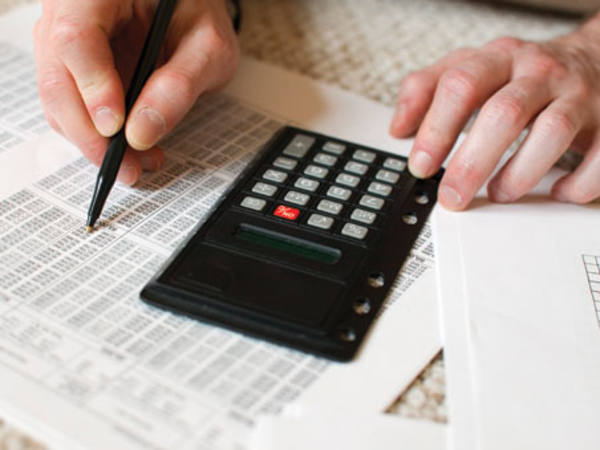- When you have accessed your pension flexibly you cannot contribute as much as the usual annual allowance to your pension
- This limit will increase on 6 April but still remains significantly below the maximum annual allowance
- We look at what triggers it and what your options are
In the Spring Budget, chancellor Jeremy Hunt abolished the pensions lifetime allowance and announced meaningful increases to both the annual allowance and the money purchase annual allowance (MPAA), in a bid to reduce economic inactivity among the over 50s. Although the least known of these three limits, the MPAA can have significant consequences for your retirement planning, so it’s worth knowing how it works and how you can avoid triggering it if you need to access a portion of your pension savings.
What is it and what’s changed?
The MPAA reduces the amount you can contribute to your pension tax-free each year. This is normally capped by the annual allowance, which is increasing from £40,000 to £60,000 from 6 April, or the amount of your relevant earnings – whichever is less. However, triggering the MPAA results in a reduction in this annual cap. The MPAA was originally introduced in 2015 to stop people from recycling tax relief by drawing income from their pensions and then paying it back into their pots. At the time, it was set at £10,000 but was later reduced to £4,000.
In the Spring Budget, Hunt announced that the MPAA would go back up to £10,000. Industry figures had campaigned for this change, arguing that the allowance was unnecessarily punitive, particularly for people who accessed their pension savings in a moment of financial stress and later wanted to rebuild their pots or were keen to go back to work after taking some form of early retirement.
The increase makes a substantial difference. Alice Guy, head of pensions and savings at Interactive Investor, calculates that if you draw taxable income from your pension as soon as you turn 55, paying the extra £6,000 a year allowed by the new MPAA into your pension for the following 11 years, you would boost your retirement pot by £85,759, assuming annual investment growth of 5 per cent.
“Someone who’s 55, recently retired and dipped into their taxable pension can now return to the workplace and pay as much as £833 per month into their pension pot, including tax relief and employer contributions,” she says. “This means they can fully take advantage of employers’ pension contributions and pension tax relief, just like younger workers.”
Triggers
The MPAA is triggered when you flexibly access taxable income from your pension after age 55. Whether you trigger it depends on how you take money out of your pension.
The most common trigger events for the allowance are:
- Taking an uncrystallised funds pension lump sum (UFPLS). A quarter of every UFPLS you take is tax-free and the remaining 75 per cent is liable to income tax. This is a fairly straightforward way to access some pension money early without having to decide whether to put your pension into drawdown or buy an annuity.
- Withdrawing your whole pot as a lump sum. As only a quarter of the sum is tax-free, this option is usually more suitable for relatively small pots.
- Moving your pension into drawdown and starting to draw income from it.
Taking income from a final-salary (defined-benefit) pension scheme does not trigger the MPAA. Buying an annuity doesn’t usually trigger the allowance, with the exception of annuities whose amount can decrease over time. In practice, this exception applies to investment-linked annuities, of which the retirement income changes on the basis of the performance of the investments linked to the annuity.
Potential solutions
As well as annuities and final-salary schemes, there are three main ways to access your pension money without triggering the MPAA.
If you take a tax-free lump sum and crystallise the rest of the pot, but avoid taking drawdown income from it, you do not trigger the allowance. “It is possible to partially crystallise your fund so you just take out the tax-free cash you need, with the rest left in your fund and able to grow tax-efficiently,” explains Tom Selby, head of retirement policy at AJ Bell (AJB).
For example, you have a £200,000 pension pot and want to withdraw £25,000 to refurbish your home. You are over age 55 but still working, and would like to continue making significant contributions to your pension. You could crystallise half of your pot, taking £25,000 as a tax-free lump sum and moving £75,000 into drawdown but not taking income from it, and leave the remaining £100,000 uncrystallised. This way, the MPAA is not triggered and you could still make tax-free pension contributions up to the value of your annual allowance in the years to come.
There are different rules if your pot is worth £10,000 or less, in which case you could withdraw both the tax-free and taxable element of the pension flexibly without triggering the MPAA, as long as you extinguish the entire fund. You can take up to three small pot withdrawals worth £10,000 or less from personal pensions and an unlimited number of these from workplace pensions.
Taking money via capped drawdown does not trigger the MPAA as long as the withdrawals don’t exceed the maximum income limit. While capped drawdown is no longer available, some savers who accessed this method of income withdrawal before April 2015 have remained in such schemes.
What if you trigger the MPAA?
If you trigger the MPAA, not only is the amount you can contribute tax-free to your pension each year reduced drastically, you also lose the ability to carry forward any unused annual allowances you had in the three previous tax years. The tax bill you will pay if you breach the MPAA depends on the tax relief you receive on your pension contributions, for example 20 per cent for a basic taxpayer. Basic rate tax relief is usually added at source if you make workplace pension contributions.
With pension rules being so complex, “it is inevitable that many people will be unaware of the consequences of triggering the MPAA – or even that they have triggered it at all – and will risk sleepwalking into a huge tax bill if they breach it,” says Selby.
If that happens, there is not much that you can do, because triggering the allowance cannot be reversed. While the increase in the MPAA will mean that people who have accessed their pensions flexibly can contribute more significant amounts to their pots than before, the MPAA will still only be worth a sixth of the annual allowance. This is a problem if you plan to make big contributions to your pension pot later in life, for example because you started saving for retirement late and need to catch up.
Dawn Mealing, head of advice policy and development at Fidelity International, adds that if you trigger the MPAA “you may also not be able to pass down as much as you [could have otherwise] via a pension scheme to future generations, with the associated potential inheritance tax (IHT) savings”.
Pension schemes do not normally form part of your estate for IHT purposes, and if you die before age 75,your beneficiaries can draw income from them free of income tax.
Mealing says that if you have triggered the MPAA but want to save more than £10,000 a year, tax-efficient alternatives include maximising your spouse’s contributions to their pensions, contributing to individual saving accounts (Isas) and, if you are okay with riskier investments, venture capital trusts (VCTs).










